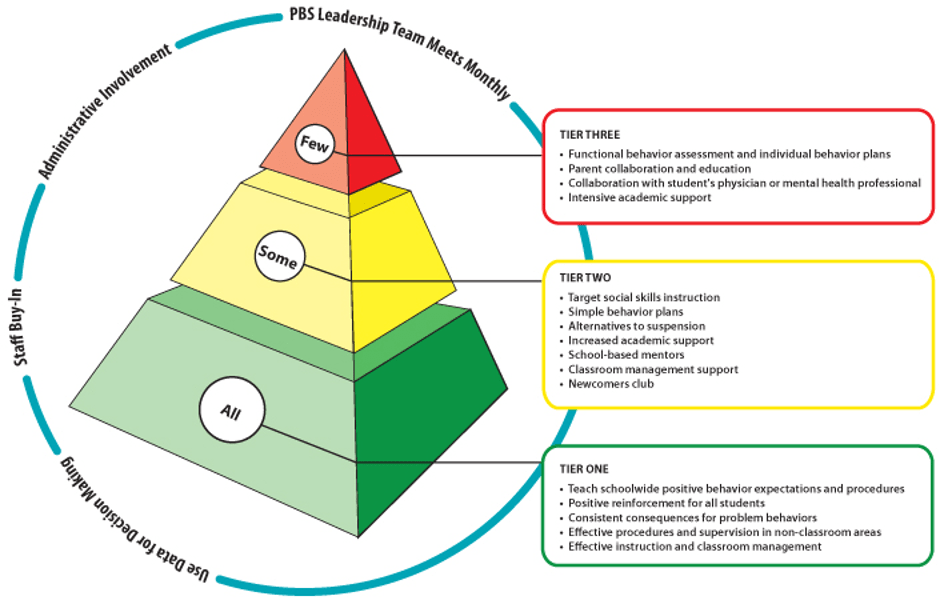Positive Behaviours
School Wide Positive Behaviour Support
What Is School Wide Positive Behaviour Support? (SWPBS)
The goal of School Wide Positive Behaviour Support at Kyneton High School is to create and maintain a positive and safe learning environment that enhances our school culture where we maximise individual academic and social growth.
What Does SWPBS Look Like At Kyneton High School?
1. Clear set of behaviour expectations are developed around our key school values (as defined in our matrix).
RESPECT YOURSELF, RESPECT OTHERS, RESPECT OUR ENVIRONMENT
2. Students are able to state the behavioural expectations.
3. Students are recognised for positive behaviours.
4. Positive expectations and behaviours are explicitly taught and encouraged.
5. Data is collected and used for decision making.
6. It is a team-based approach.
Levels Of School Wide Support
To ensure that students at Kyneton High School receive what they need to be successful we use the continuum of support which is described below:

Behaviour Expectation Matrix
The Behaviour Expectation Matrix translates Kyneton High School’s three key expectations into expected behaviours. The matrix clarifies what our behaviours should look, sound and feel like. Our expected behaviours are explicitly taught in every classroom and consistently reinforced through out the school. Our matrix’s are soon to be displayed and positioned in many locations around the school and are referred to and discussed regularly with all students at Kyneton High School.
Behaviour Expectation MatrixExplicitly Teaching Our Expected Behaviours
Why Do We Explicitly Teach Our Expected Behaviours?
Introducing, modelling and reinforcing positive social behaviour is an important step of a student’s educational experience. Explicitly teaching our behavioural expectations and acknowledging students for demonstrating them is key to our success.
- They are necessary skills for success in life.
- Many students arrive at school without these important skills.
- They are the basis for a positive and safe climate.
- Doing so increases opportunities to teach other skills.
When Do We Teach Our Expected Behaviours?
- At the beginning of school year.
- Often enough to achieve and maintain fluency.
- Before times when problem behaviours tend to increase.
- Ongoing throughout the year. (refresher lessons)
- At teachable moments.
How Do We Teach Social Behaviours?
Tell – Introduce the expected behaviours and discuss why it is important
Show – Demonstrate and model
Practice – Role play expected behaviours in the relevant contexts
Monitor – Pre-correct, supervise and provide positive feedback
Reteach – Practice throughout the day
Where Do We Teach Our Expected Behaviours?
- In every classroom throughout the school.
- Everywhere in the school.
- It is Imbedded in other school activities
Acknowledging, Reinforcing & Recognising Expected Behaviours
When students demonstrate school wide expectations, staff will note their success with positive reinforcement. This may include social or tangible reinforcers. Two key components of our acknowledgement system are our “6:1” positive feedback model where staff endeavour to “catch the students doing it right” & our XUNO Achievements Positive Acknowledgement system.
XUNO Achievements Positive Acknowledgement System
Staff at Kyneton High School have the opportunity to acknowledge and recognise positive behaviours of students by creating a positive behaviour Achievement post on the student’s XUNO portal. The family receive the Achievement acknowledgement through a XUNO notification. The student can also receive a certificate award for their positive behaviour Achievement.
XUNO Portal